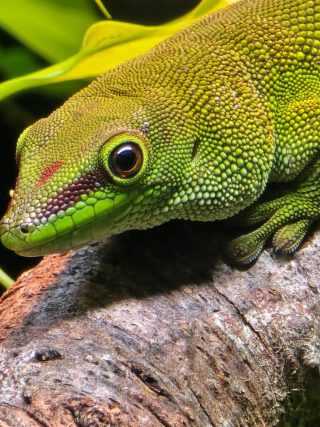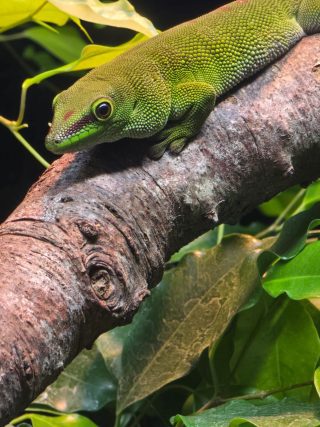Fun Facts
Madagascar giant day geckos have sticky scales on their toes that allow them to climb upright surfaces. This helps them to reach very high up places in the trees.
The bright green colour of Madagascar giant day geckos helps them to camouflage (blend in) among plants to hide from prey. It also helps them to hide from predators. If they are spotted by predators, they can drop the last part of their tails to confuse them and escape.
Madagascar giant day geckos have calcium pouches on the sides of their heads. Scientists think that this gives them a supply of calcium for body functions like producing eggs and keeping bones healthy.

